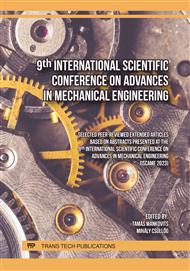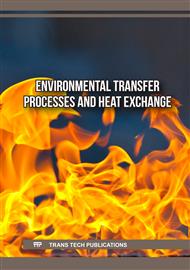p.3
p.13
p.23
p.41
p.53
p.67
p.77
p.91
p.103
Effect of Microchannel Geometry on Thermal Performance of Microchannel Heatsinks: A CFD Study
Abstract:
This paper presents a comprehensive investigation into the thermal performance of microchannel heatsinks featuring varying geometries. The investigation was carried out utilizing computational fluid dynamics (CFD) simulations. Computational Fluid Dynamics (CFD) simulations have demonstrated potential as a viable method for prognosticating system performance. This study involved the modeling and analysis of three primary microchannel heatsink configurations, namely uniform, convergence, and divergence, utilizing ANSYS package v.22.1. The study examined the various parameters that affect microchannel heatsinks and evaluated their thermal performance. The investigated case involved laminar flow through microchannels of varying cross sections in a heat sink, where the Reynolds number is equal to 129. Steady state flow, incompressible fluid, neglecting radiation and natural convection, constant characteristics, and negligible viscous dissipation were assumed in the study. The results emphasize the significance of microchannel geometry and flow configurations in augmenting heat dissipation. The results were subjected to numerical validation, which demonstrated a high level of concurrence with prior research. The reliability of the numerical model was validated, thereby substantiating its suitability for utilization in simulations. The convergence microchannel, specifically in Case no.2, and the divergence microchannel, specifically in Case no.7, exhibited optimal performance. In the second case, there was a notable average improvement rate of 35%, which suggests that the heat dissipation capabilities were superior. Cases 3 through 11 demonstrated favorable outcomes, with improvement rates varying from 2.7% to 30%. Conversely, Cases 12 and 13 exhibited less satisfactory results. In conclusion, this research highlights the importance of microchannel heatsinks in effectively addressing thermal issues in electronic systems. The utilization of convergence and divergence microchannel configurations, in conjunction with carefully selected geometric parameters, exhibits the potential for efficient heat dissipation.
Info:
Periodical:
Pages:
53-65
Citation:
Online since:
September 2024
Authors:
Keywords:
Price:
Сopyright:
© 2024 Trans Tech Publications Ltd. All Rights Reserved
Share:
Citation:



